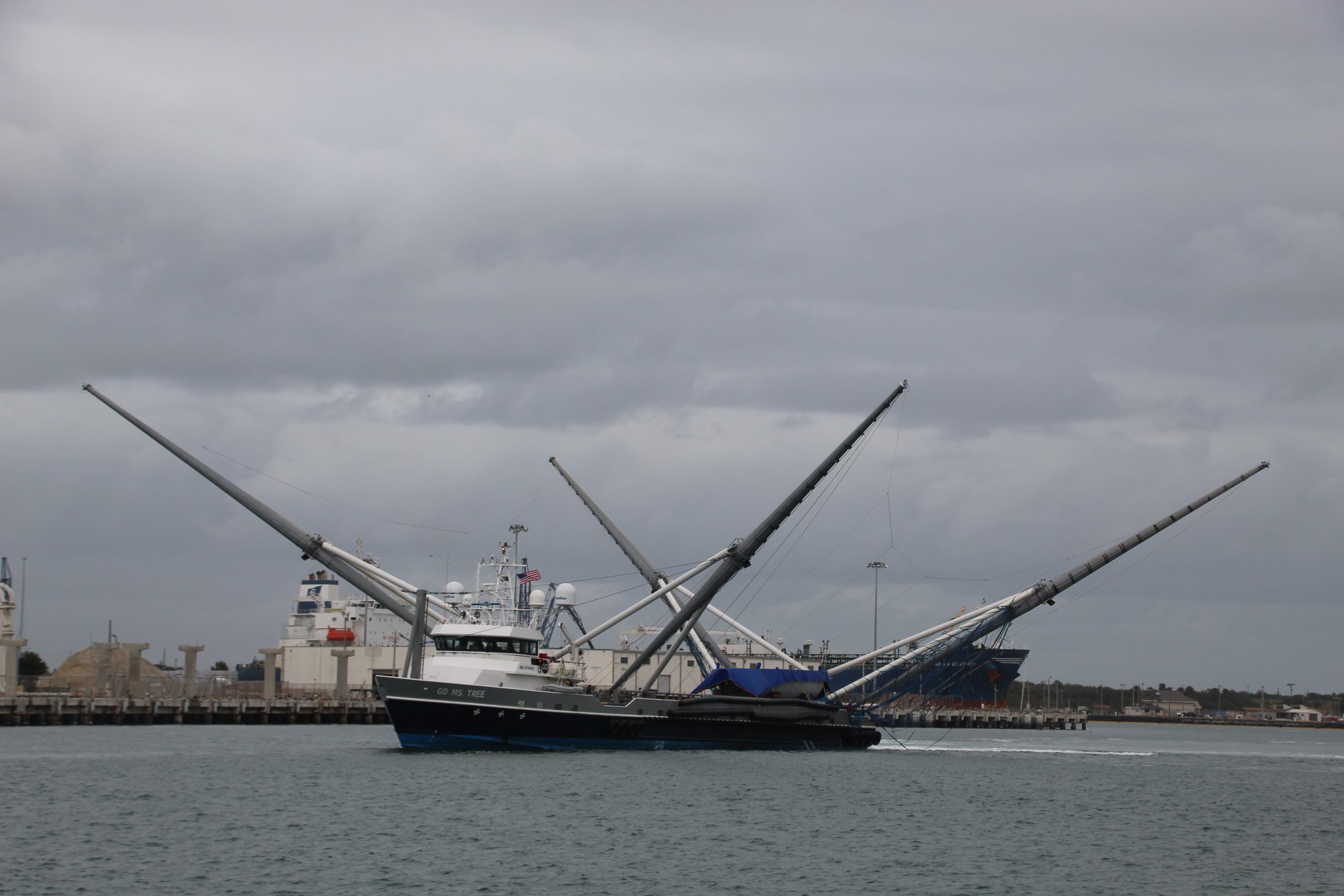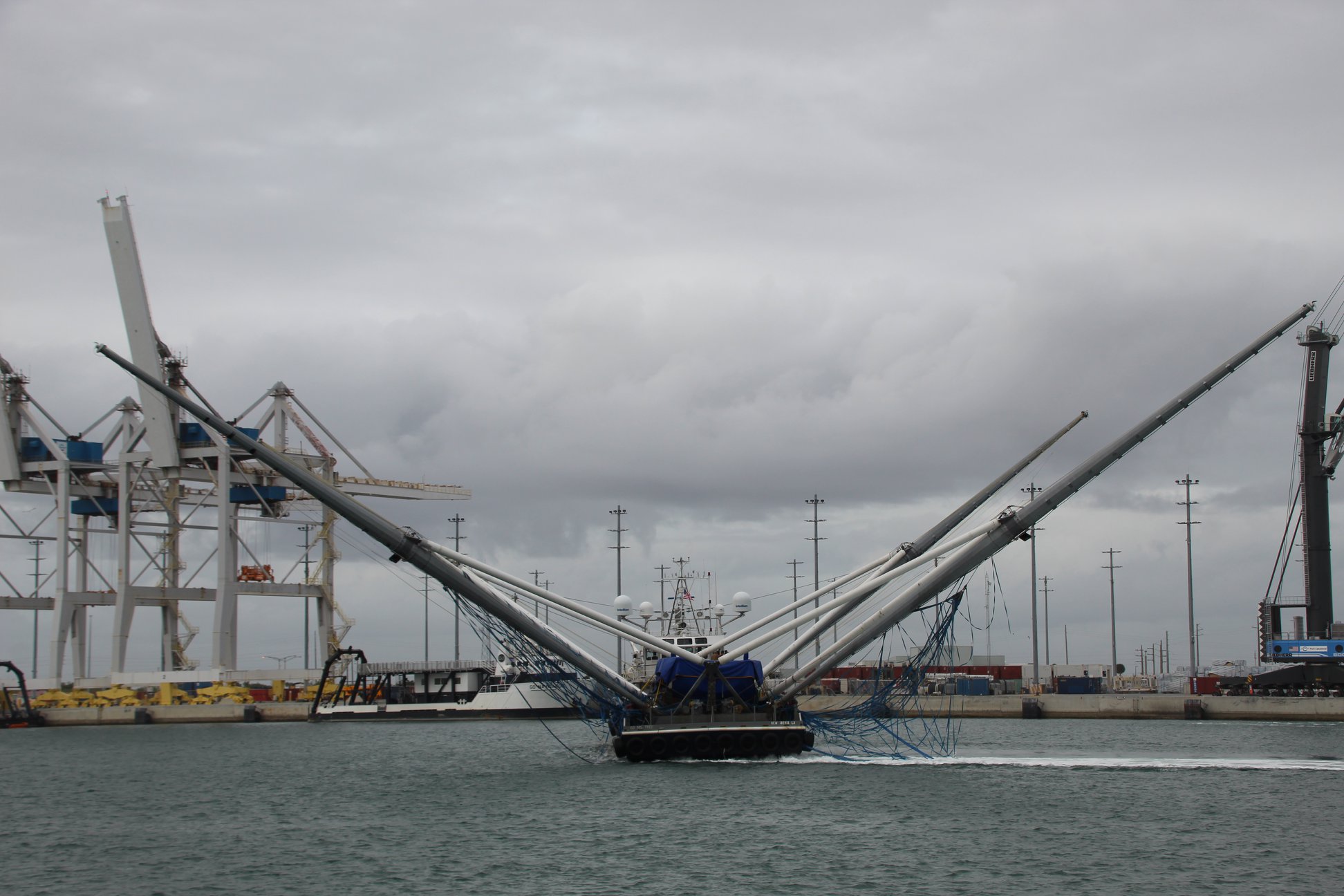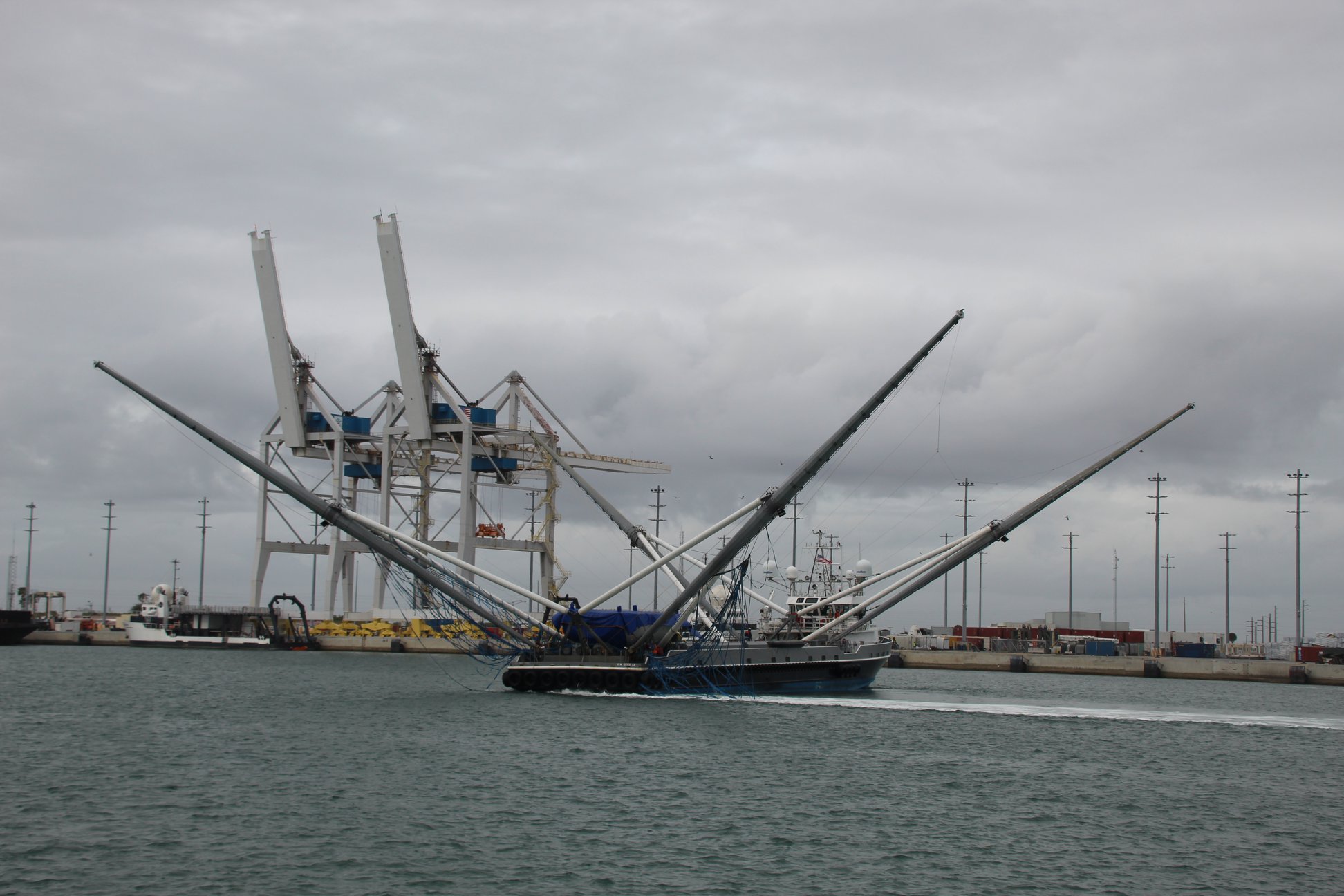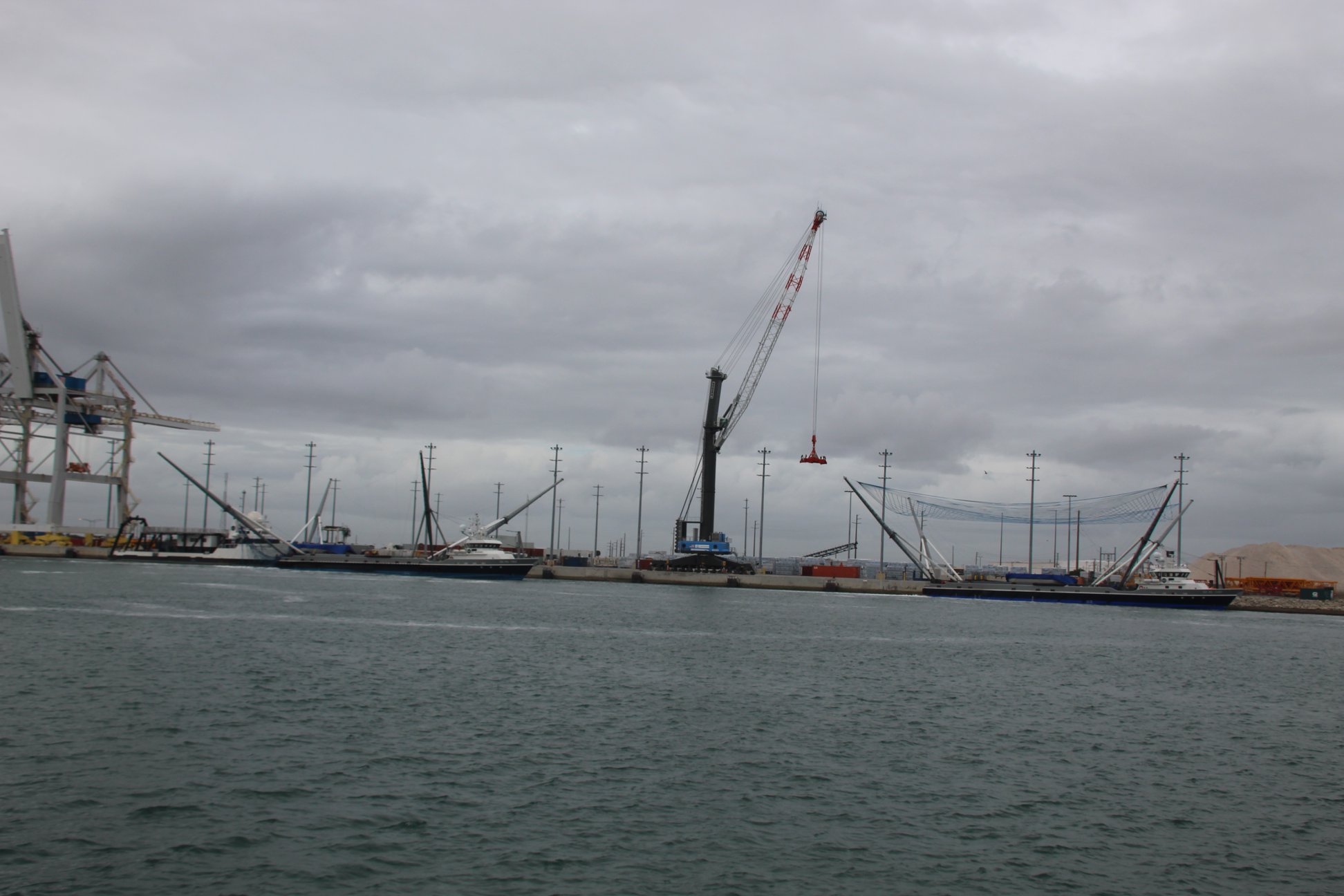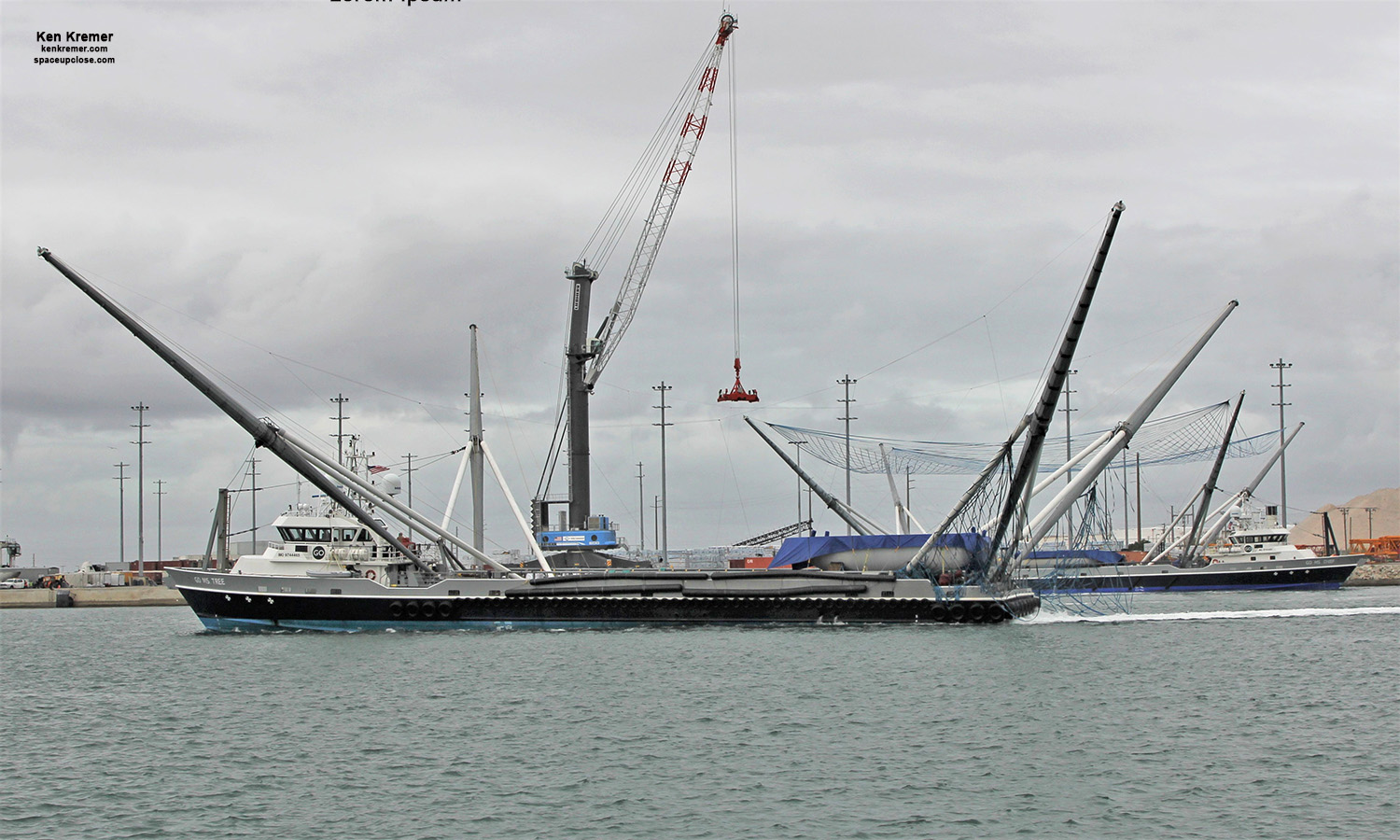
For SpaceUpClose.com & RocketSTEM
PORTCANAVERAL/CAPE CANAVERAL AIR FORCE STATION, FL – Following the oft weather delayed but nevertheless spectacular SpaceX launch of their next batch of their 60 Starlink satellites into sunny skies on a used Falcon 9 rocket on Wednesday morning, Jan. 29, the special SpaceX naval fleet team was able to successfully recover both halves of the payload fairing and sail them triumphantly back into Port Canaveral just over a day later Thursday, Jan 30.
Enjoy our Space UpClose photos of the payload fairing arrivals on the pair of specially designed ships – GO Ms. Tree and GO Ms. Chief – outfitted with giant nets that resemble giant catchers mitts; taken by Ken Kremer and Jean Wright.
Both SpaceX fairing catcher ships arrived into Port Canaveral following one after another one by one starting around 3:30 p.m. EST today Jan 30 and just minutes apart – carrying both recovered nose cone fairing halves.
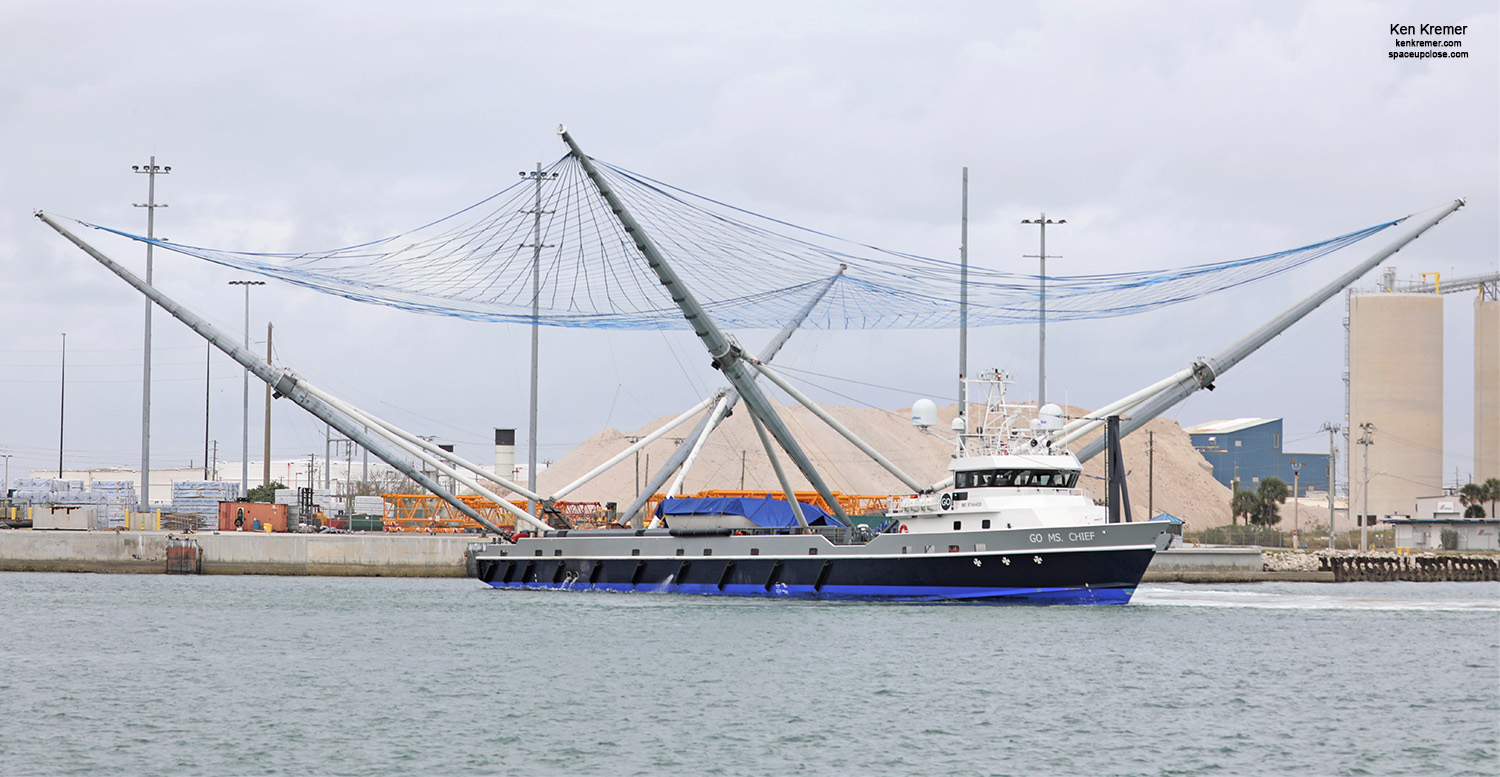
Approximately 45 minutes after liftoff, SpaceX’s two fairing recovery vessels, “GO Ms. Tree” and “GO Ms. Chief,” attempted to recover the two fairing halves with their giant catcher’s mitt nets.
One fairing was caught mid-air by GO Ms. Tree’s net just meters above the corrosive and damaging sea waters and just moments before splashdown in the Atlantic Ocean – while the other half was hauled from the ocean by the crew aboard GO Ms. Chief.
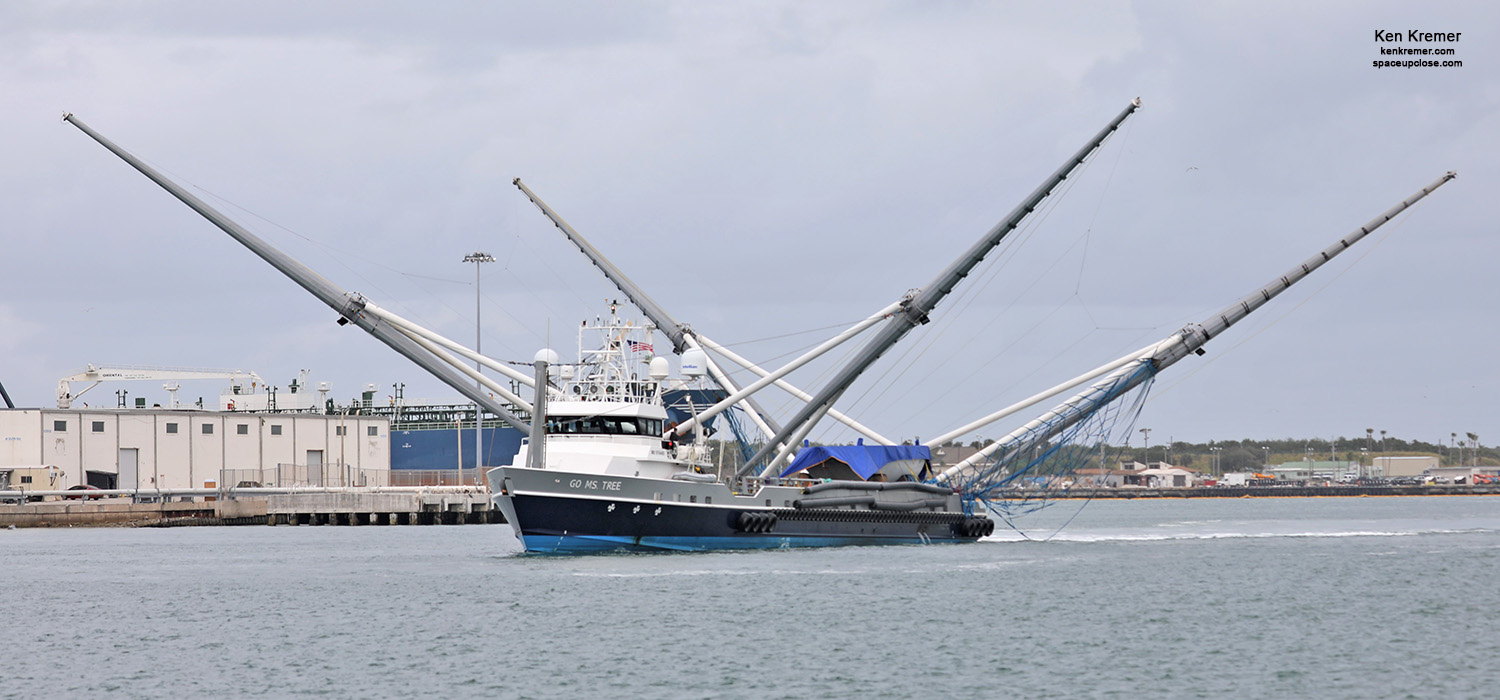
The crew on GO Ms. Tree deftly maneuvered the repurposed ship to capture the nose cone half.
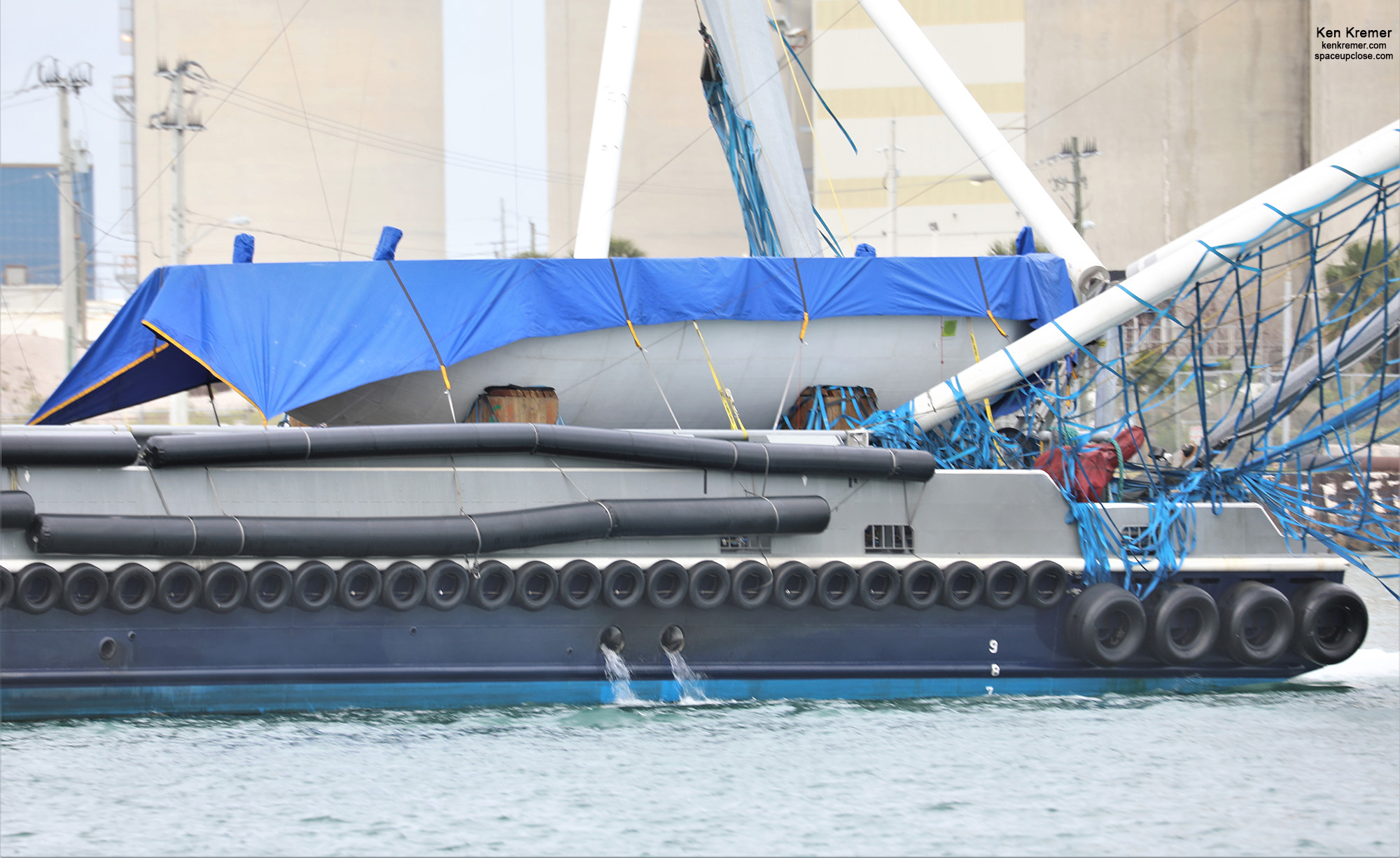
To date the SpaceX ships have caught a total of three fairing halves – including today’s triumph.
See the capture in this launch day video from SpaceX.
“Ms. Tree caught a fairing half – our third successful catch!” tweeted SpaceX.
Ms. Tree caught a fairing half – our third successful catch! pic.twitter.com/VJU8asg4gS
— SpaceX (@SpaceX) January 29, 2020
The fairing half was then lowered and stored on deck in a protective cradle. The net became broken at some point after the recovery operation.
After scooping the other fairing half from the sea waters, the crew of GO Ms. Chief maneuvered the nose cone to the giant upper net for the voyage back to Port Canaveral.
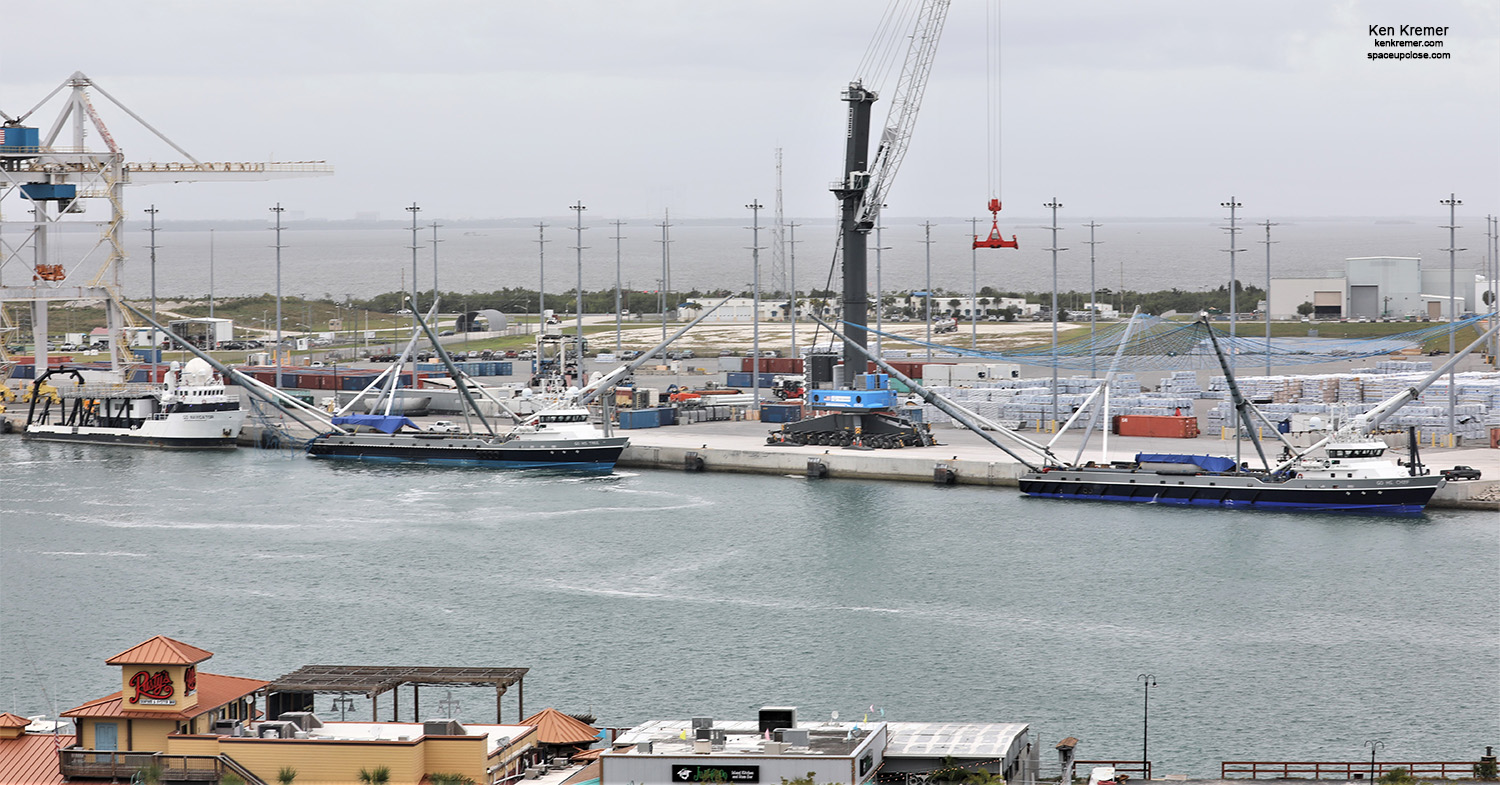
SpaceX CEO Elon Musk has made rocket recycling a top priority in order to slash launch costs.
Musk says that the fairings cost approximately $6 million or roughly 10% of the approximate cost of $60 million for a new Falcon 9 rocket.
The payload fairings are a critical piece of the rocket hardware and comprise the nose cone that encapsulates the five dozen stacked Starlink satellites flight that protect the payload from strongly destructive atmospheric forces and frictional heating during the first few minutes of flight until safely passing through and exiting Earth’s atmosphere.
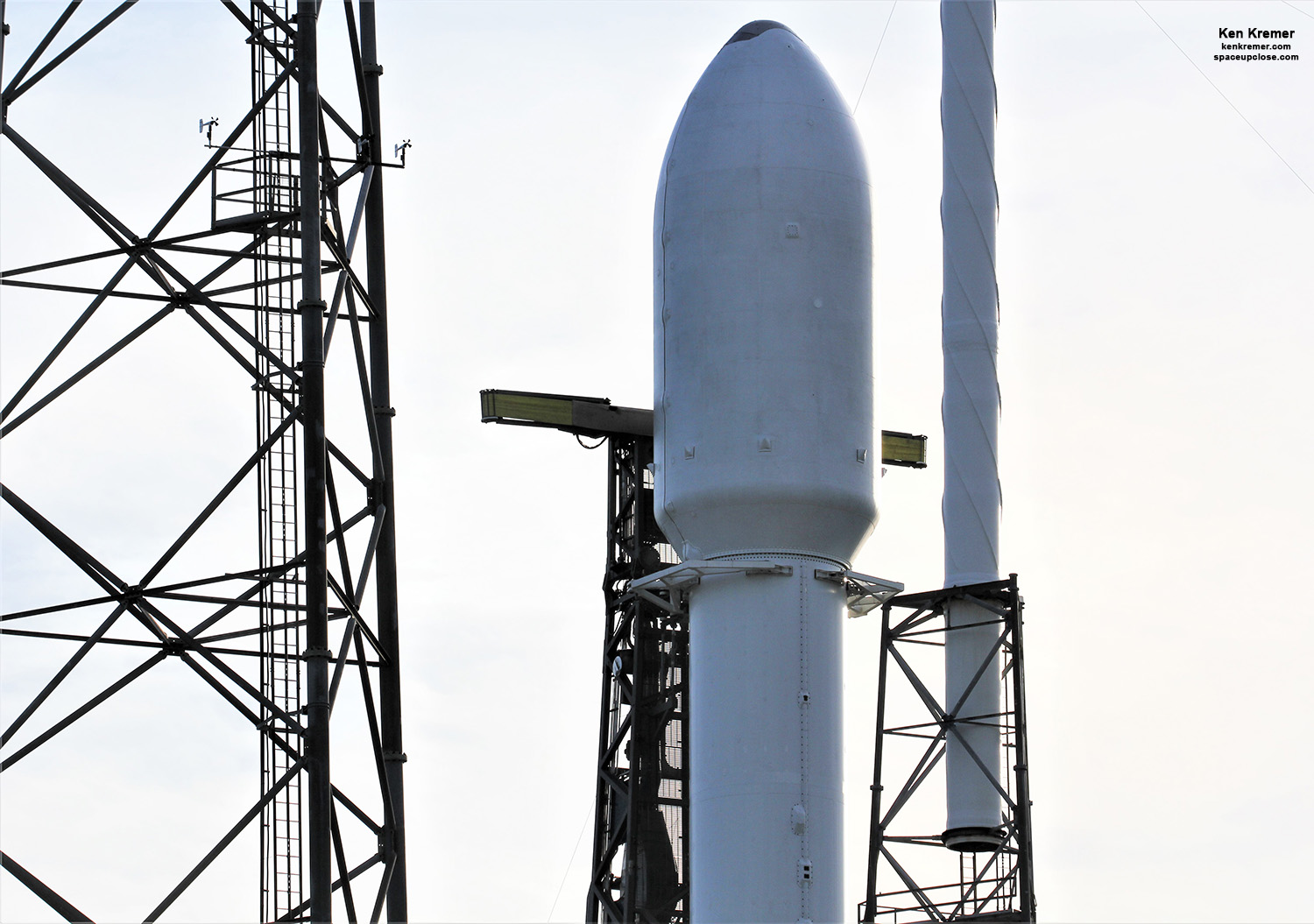
Slews of spectators were on hand to enjoy the absolutely stunning SpaceX launch on Jan. 29 after poor Florida Space Coast and Atlantic Sea State weather forced several delays spanning over a week.
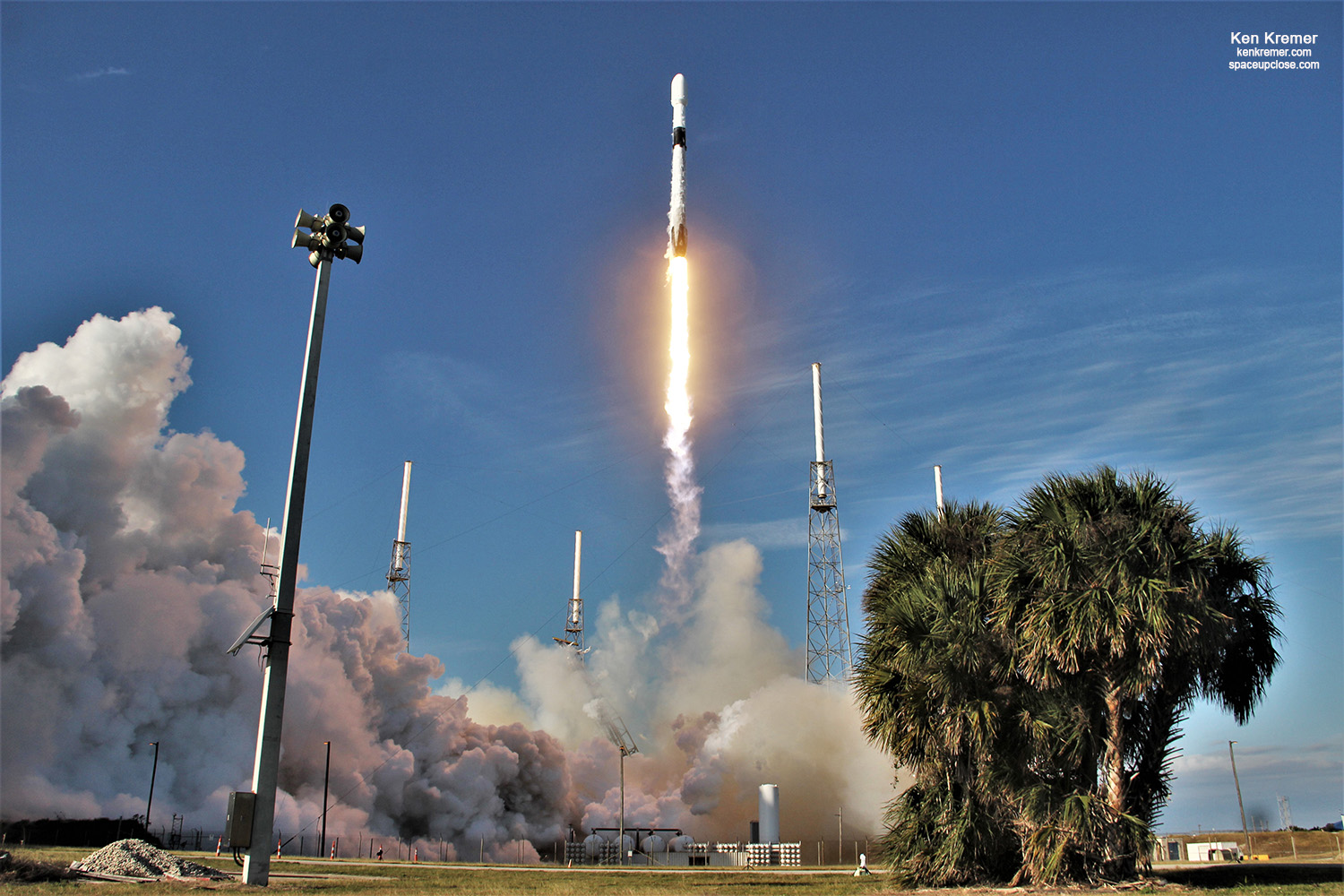
The launch was the third one for this Falcon 9 booster 1051 after previously flying the SpaceX Crew Dragon on its first demonstration mission Demo-1 in March 2019 (see our earlier articles and photos) and the RADARSAT Constellation Mission in June 2019.
SpaceX also successfully recovered the first stage successfully.
Following stage separation, SpaceX successfully targeted the booster to land on the “Of Course I Still Love You” droneship about 8 minutes after launch – which was stationed about 400 miles (640 kilometers) northeast of Cape Canaveral in the Atlantic Ocean.
Although it did appear from the video to be a bit hard – the booster landed upright.
Thus SpaceX has successfully landed 49 booster altogether by land and by sea.
“Falcon 9’s first stage has landed on the Of Course I Still Love You droneship – our 49th successful landing of an orbital class booster,” SpaceX tweeted.
Falcon 9’s first stage has landed on the Of Course I Still Love You droneship – our 49th successful landing of an orbital class booster pic.twitter.com/QyR3zyPcIp
— SpaceX (@SpaceX) January 29, 2020
The two stage Falcon 9 rocket stands 229 feet (70 meters) tall.
My Starlink and Crew Dragon launch commentary and rocket and fairing photos were featured on WFTV ABC TV News Orlando and WKMG CBS TV News Orlando:
https://www.wftv.com/news/local/brevard-county/brevard-county-officials-look-out-rocket-debris-beach/UN5EL6OL7FGUZEXW44QVJMYGZI/
https://www.clickorlando.com/news/local/2020/01/20/next-launch-spacex-to-send-more-starlink-satellites-into-space/
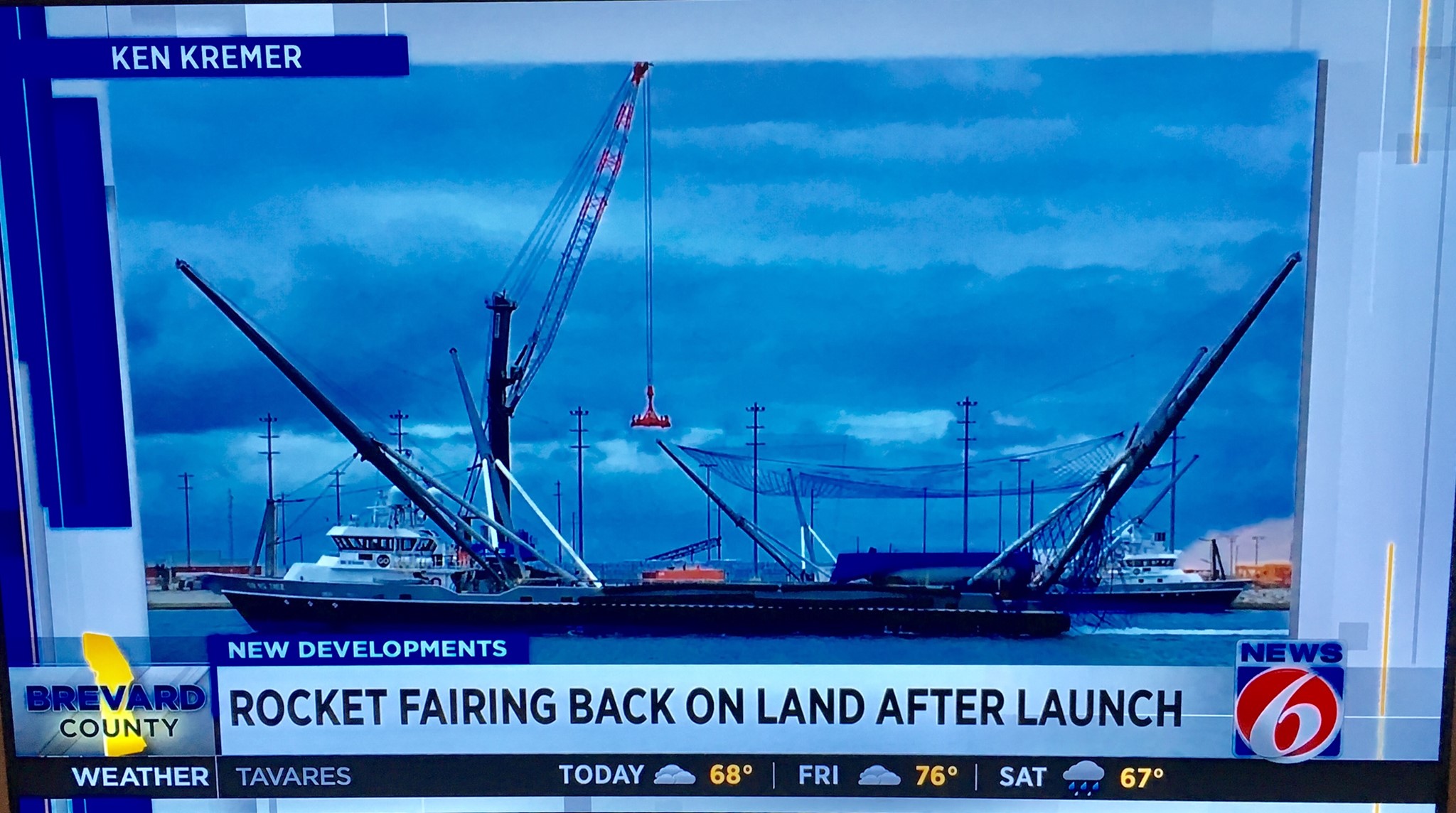
Watch Ken’s continuing reports onsite for live reporting of upcoming SpaceX and ULA launches including In-Flight Abort, Starlink and Solar Orbiter in Jan/Feb 2020 at the Kennedy Space Center and Cape Canaveral Air Force Station.
Stay tuned here for Ken’s continuing Earth and Planetary science and human spaceflight news: www.kenkremer.com –www.spaceupclose.com – twitter @ken_kremer – email: ken at kenkremer.com
Dr. Kremer is a research scientist and journalist based in the KSC area, active in outreach and interviewed regularly on TV and radio about space topics.
………….
Ken’s photos are for sale and he is available for lectures and outreach events
Ken’s upcoming outreach events:
Feb 7/8: 7 PM, Quality Inn Kennedy Space Center, Titusville, FL. “ULA Solar Orbiter Feb 9. SpaceX In Flight Abort and Starlink launches.” Free. In hotel lobby. Photos for sale
Additional fairing boat arrival photos from Jean Wright for Space UpClose:
